MEET THE WEEVIL
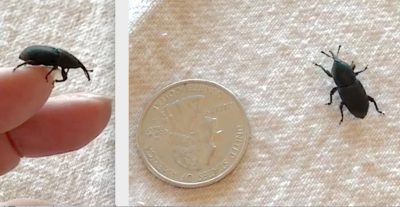
Agave snout-nose weevil
The agave snout-nosed weevil is a half-inch-long black beetle with a downward-curving proboscis that enables it to pierce an agave’s core, where it lays its eggs. Grubs hatch, consume the agave’s heart, then burrow into the soil to pupate.
The weevil (Scyphophorus acupunctatus)---once prevalent only in desert regions and Mexico---is spreading rapidly throughout the US and abroad, earning it the dubious distinction of being one of the "Top 100 Worst Global Invasive Species."
Also at risk are Agave relatives such as Beaucarnea, Yucca, Mangave and Furcraea.
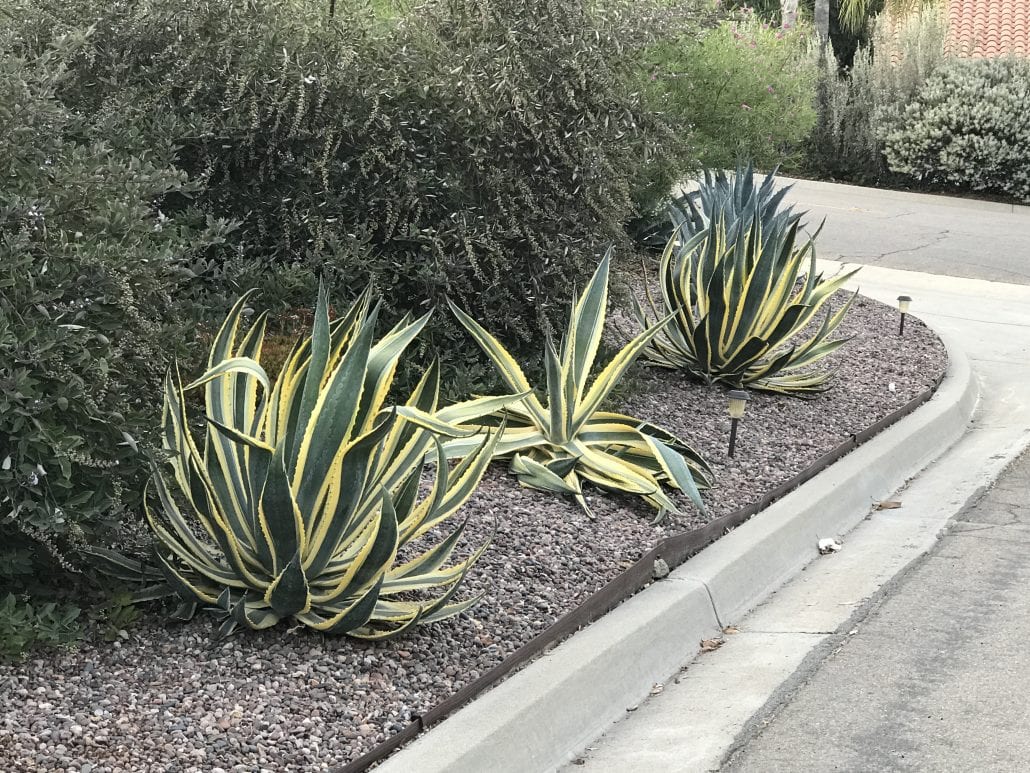
An upright center cone and drooping outer leaves are a sign of snout weevil. Such plants, lacking roots, will rock or fall over when pushed.
HOW TO TREAT YOUR AGAVES
The goal is to drench the agave's roots. Do this in spring and fall:
1. The day before, soak (hose-water) the soil at the base of each agave to aid penetration.
2. Follow label directions. Wear gloves and protect your skin and eyes.
3. To mix the solution, I use a hose, a 3-to-5 gallon bucket, and a stick for stirring. If the label doesn't say how much concentrate per gallon of water for agaves, go with the ratio for shrubs.
How much? If using Compare-N-Save Systemic Tree and Shrub Insect Drench or BioAdvanced Systemic Plant Fertilizer and Insecticide: 3 oz. per foot of plant height per gallon of water.
4. Slosh the solution where lowest leaves meet the core to effectively drench the soil at the base of the plant.
5. Water the agave again in 3-4 days to ensure good soil saturation.
6. Apply in spring, repeat in 3-4 weeks, and treat once again in fall.

Temperatures above 80F may diminish the insecticide's effectiveness, and it may possibly harm plants already stressed by heat.
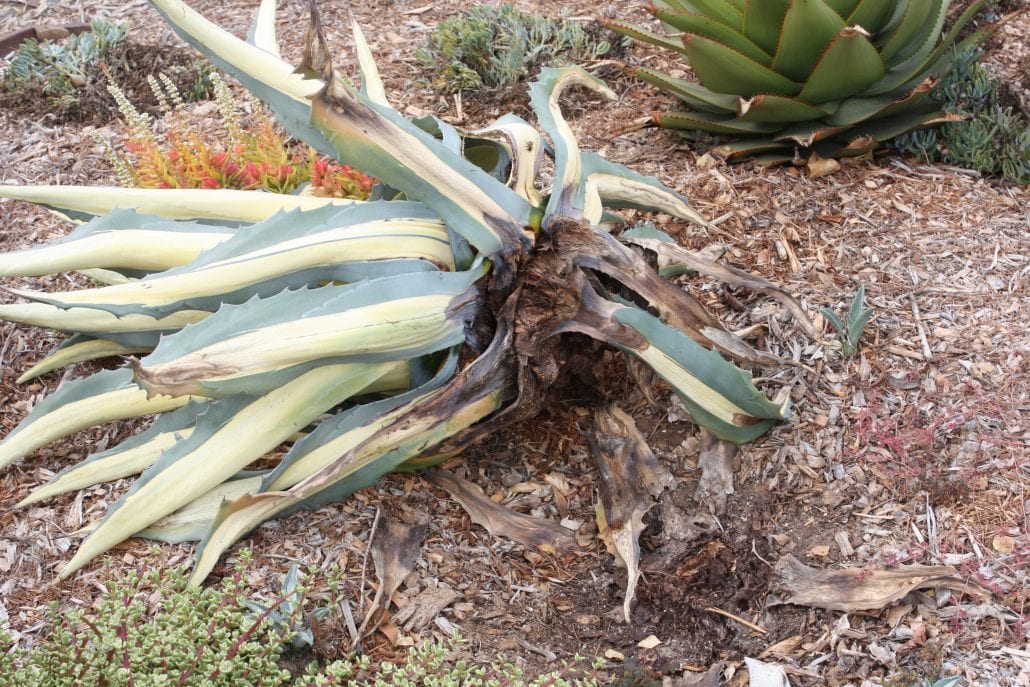
IS YOUR AGAVE INFESTED?
Look for damaged tissue where leaves meet stem. The lowest leaves will appear wilted, and may slope unnaturally downward while the center cone remains upright. The plant, no longer anchored by roots, will rock when pushed.
When an infestation is well underway, it's possible to shove the agave over onto its side. It'll break at soil level, revealing a mushy, foul-smelling core infested by plump, squirming, half-inch, cream-colored grubs with brown heads.
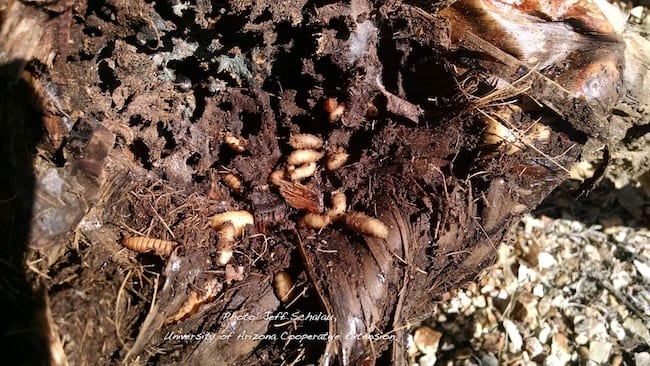
Above: an agave's grub-eaten core resembles a sponge. Watch my Instagram video of a grub-infested agave.
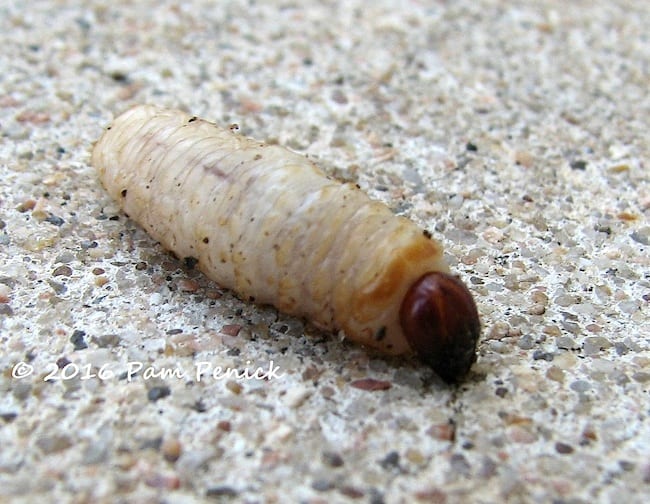
Above: Close-up of a snout-nose grub.



